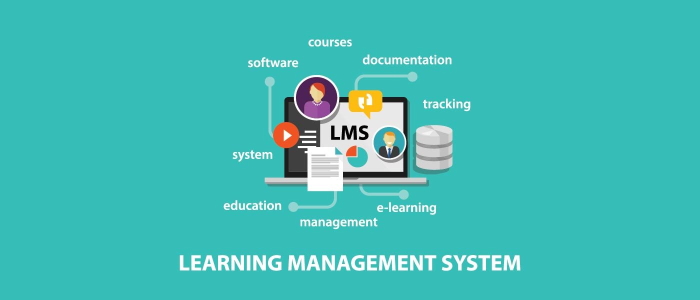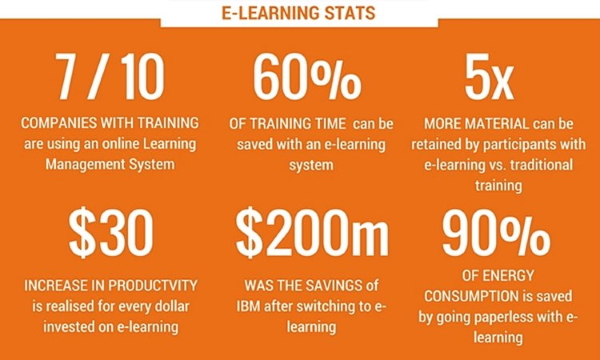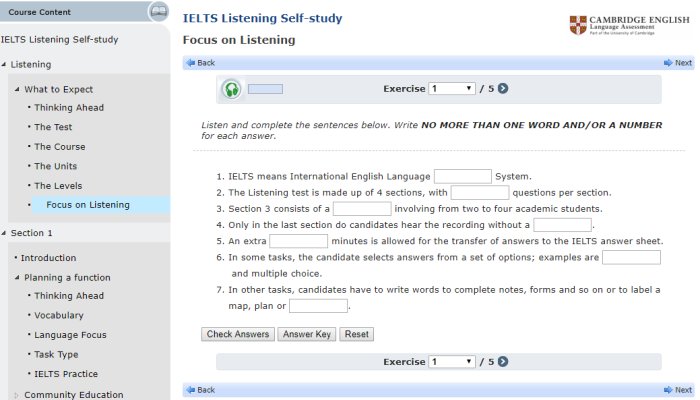A Guide to the Best Learning Management Systems of 2023
Companies that invested in formalised training experienced24% higher profitsthan other companies. If you want to train employees or others involved...
4 min read
AJ Sallis
:
Oct 23, 2019 10:29:49 AM

Traditional means of training such as group training often take a long time. It costs a high amount of money and the learning experience might not be the same for everyone. Online training is a quicker and more cost- and time-effective alternative. People can learn and build skills anytime, anywhere.
Having a learning management system can significantly improve the effectiveness and success of online training. E-learning is becoming increasingly popular with medium and large-sized businesses who have their training material well-defined and ready for on-demand learning. Online training can include videos, presentations and documents such as PDF files.
Seventy percent of the companies that need to provide employee training are using learning management system software as per recent eLearning Industry reports. IBM was able to save $200 million after they switched to online learning.
According to recent studies by Studocu.com on average, E-Learning increases a learner’s retention rate to 82%. Participants will also be able to retain 5x more knowledge. As we have explored the benefits of online learning, let’s have a look at strategies to improve your learning management system. You should also check the ranking of a learning management system before you implement it.

People don’t like to consume boring content. While creating content for your courses, create creative and visually appealing content. Add high-quality visuals, charts, and infographics. Instead of using a text box, you can use a drop-down menu or radio button wherever possible. Break content into smaller modules and quizzes at the end of a group of modules. Make it engaging.
Your employees might be from different backgrounds, have different experiences and different levels of technical and non-technical skills. Giving the same training to all the employees won’t be efficient as they will need customized learning based on their experience and skills. Creating distinct user-profiles and user groups allows you to customize the user experience, so everyone feels included.
An employee with less experience and lesser skills may need to start from the basics and then move to advanced training after having more experience. Meanwhile, the employee who has higher expertise and stronger skills can directly begin to more advanced learning management system websites that help them to take their skills to a new level. Different roles also require different training so use groups to separate roles for example managers, office workers, back office or factory staff.
Based on the job profile, department and positions, categorize the learners into common groups. Once you have the groups formed, you can create or assign customized learning paths for the members of the group. That way, group members will only see the most relevant material and learning resources. This will help them improve their productivity and build skills in weak areas.
Branding is an excellent way of making employees take pride in ownership. Furthermore having easy-to-understand and visually attractive videos and learning material will significantly improve employees’ learning experience and effectiveness of the learning management system. Employees will also feel that their company has taken pride in their training courses and highly values training. Employees should be presented with an easy to navigate dashboard that showcases all their relevant training resources.
Gamification is a great way to motivate employees to gain more skills and improve the learning management system. Connect all the online training courses and modules via a gamified structure and/or point-based reward system.
Online learning management software can gamify the user experience by providing features such as points, trophies and badges to promote to a higher skill level and unlock new content. Effective integration of such features will motivate employees to do their best. Don’t forget to have quizzes throughout and at the end of the course which will help you and them know how much they have learned and retained.
It becomes a challenge for employees to find the right course or right module if the navigation is confusing. It is recommended to simplify the navigation as much as possible using icons, search, categories and sub-categories, buttons and links. The primary goal is to create a platform that allows a learner to find the required content without going through multiple pages. Top learning management systems have self-explanatory navigation and a useful dashboard, which helps the employee to track progress and find relevant material quickly.
The primary purpose of building a learning management system is so that employees can learn anytime, anywhere, using any device they prefer. Building a web-based responsive platform that supports multiple browsers and devices will help you to provide online training that satisfies the needs of team members. Optimize the content and platform in a way that it consumes less bandwidth. Making sure that image sizes aren't too big will help with this.
Involving employees in the learning and training process can be extremely beneficial. Encouraging employees is highly effective for the employee who engages less. You can invite and encourage team members to help in shaping the modules for the courses. This will make them part of the learning and teaching process and they will see things differently. You can ask them to create or find relevant material for their fellow team members.
Learners are the best people to tell you what is best about the current system and what are the areas that could be improved. Conduct usability tests of the system and collect feedback about how it can be improved even further. Also, gather input and recommendations for improving the actual content as well. You can ask them to share their benchmark and what they need the most. Continuous feedback and improvements will lead to the best LMS software and online training.
Implementing a learning management software comes at a cost. If the organization is larger, significant time and money goes into creating content and training material. To get the best out of your LMS you need to examine and improve the processes. You can create the following KPIs to determine what the organization has achieved and where to head next.
Online training and learning management systems perform a critical role and contribute significantly to skill-building activities. One should focus on the quality of the content, simplified learning platform and a great overall learning experience. Having quizzes and gamifying learning will make courses more useful and engaging.
Apart from virtual rewards such as points, badges, trophies, you can also give a real reward such as small gifts, a gift card, certificate and other monetary or non-monetary prizes to the best performing learners. This will motivate them and give a good reason to be at the top of the leader board.

Companies that invested in formalised training experienced24% higher profitsthan other companies. If you want to train employees or others involved...

The Beginning 20 years ago, when eLearning was in its infancy, getting content out of a subject matter expert’s head and into an online format was...

Are you considering investing in your organisation's Learning Management Systems (LMS)?